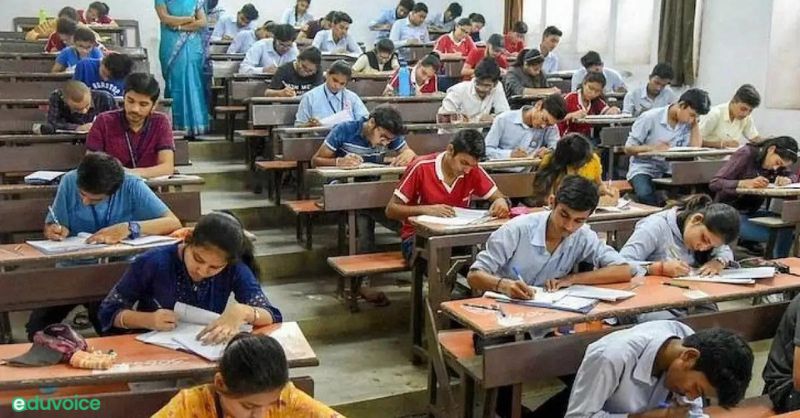Breaking away from its earlier rigid guidelines that allowed students to take upon only one full-time degree at a time, the University Grants Commission recently announced that students can now voluntarily choose to pursue two degrees of the same level at the same time from recognized institutes. While it has the potential to widen students’ horizons, the broad guidelines outlined by the UGC leave room for ambiguity and thus, errors.
On April 13, UGC secretary Rajnish Jain issued a letter ordering universities across the country and their affiliated colleges to implement the rule in accordance with the objectives highlighted in the National Education Policy (NEP) 2020. The announcement also came with a suggestion that the universities can devise mechanisms through their statutory bodies to allow their students to pursue two academic programs simultaneously keeping in mind the guidelines.
The guidelines broadly say that students can pursue two degrees at the same time if the class timings for one programme do not overlap with the class timings of the other; one can be a full-time physical degree and another can be in the open and distance learning (ODL)/online mode or up to two ODL/online programs can be done simultaneously; among others.
While the intent is to make available a “multidisciplinarity and a holistic education across the sciences, social sciences, arts, humanities, and sports for a multidisciplinary world in order to ensure the unity and integrity of all knowledge”, as the NEP states, there could be certain hiccups in the implementation of the guidelines.
Resource Collapse
According to the All India Survey on Higher Education, 3.85 crore students are currently pursuing higher education in India. However, the number of professors teaching them stands at 15.03 lakh, exposing the gulf between the two groups.
This raises concerns about the pressure that would fall on these teachers once students start taking two degrees at a time. As the professors could now be teaching twice the number of students that they used to teach, the Higher Education Institutions would have to hire more professors to successfully achieve the intended goal.
Dr. Dwarika Prasad Uniyal, Pro-Vice-Chancellor & Founding Dean, School of Economics & Finance, RV University, feels that it would be integral to heavily invest in digital tech platforms and learning management systems. With that comes training faculty and staff to be more agile and embrace technology.
Talking about the changes that need to be made in the current educational structure to facilitate the UGC move, Uniyal says that creating industry-oriented and value-added courses would help in addition to hiring more experienced people from special domains such as visiting and adjunct faculty. He also says that city-based universities and colleges should work together and stop competing.
Price To Pay
A 2020 National Statistical Organisation report titled ‘Household Social Consumption: Education in India’ reiterated a well-known fact—education is not cheap in India.
As per the report, the average expenditure on higher education is Rs. 14,264—Rs. 11, 845 in rural areas and Rs 18,485 in urban areas—at the graduate level. It climbs to Rs 18,110—Rs 15,827 in rural areas and Rs 20,443 in urban areas—at the postgraduate level and above in terms of general courses. The cost only shoots up when it comes to technical and professional courses with a graduate course costing Rs.12,274—Rs 8,701 in rural areas and Rs 21,799 in urban areas—on an average. It goes all the way up to Rs 66,824—Rs 50,512 in rural areas and Rs 74,068 in urban areas—at the postgraduate level.
With the pruning of India’s per capita income, accommodating the fees of the second degree may not be feasible for many unless the UGC decides to intervene and put restrictions on the fees that must be charged for the second degree. As per the current UGC guidelines, the fees aspect of the move and even the part where teachers’ salaries may have to be increased to keep up with the increased burden have not been addressed.
The Mental Toll
With the constant pressure of excelling academically hovering over their heads, Indian students have been struggling with mental health issues like stress, depression, and anxiety disorders that have even led to suicide in some cases. With two degrees in the picture, the likelihood of that pressure soaring is high—double the assignments, subjects that may or may not belong to the same field, examinations, preparations, and even peers with whom they may be compared.
When it comes to picking the combination of degrees, the student’s decision will have to be properly guided, researched, and thought through so as to not risk their overall personality development just because they are stuck pursuing the two degrees which consume all their time.
Dr. Syed Zafar Sultan Rizvi, an assistant professor from Noida International University, who also holds a Ph.D. in Psychology, has a different view. Giving the example of India’s former president Dr. A.P.J. Abdul Kalam. who was not only an extraordinary scientist but also an extremely good Veena player, Rizvi says that it will depend on how students select their courses.
If someone is pursuing a degree in science and wants to explore his/her creativity or artistic nature by opting for fine art or music course, then it would be beneficial for them and would enhance their productivity. There are many examples of scientists, researchers, and doctors who work hard in their field but can get time for their passion for learning new things,
He says
For More Such Articles, News Update, Events, and Many More Click Here






